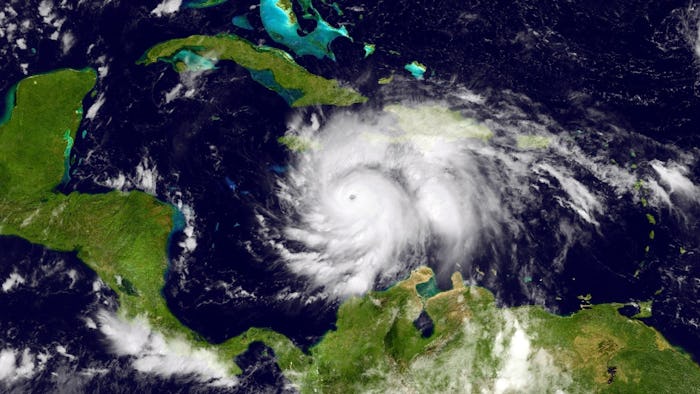News

Here's The Strange History Behind Hurricane Names
The 2017 hurricane season has reared its head in full force over the past two weeks, with Hurricane Harvey leaving Houston, Texas, with once-in-a-century flooding and the monster Hurricane Irma bearing down on the Caribbean. Behind Irma, Tropical Storm Jose is churning over the Atlantic while Tropical Storm Katia has formed in the southernmost part of the Gulf of Mexico. Harvey, Irma, Jose, Katia — just how are hurricanes named, anyway? It's not some mysterious process that happens in the back room of The Weather Channel, nor is it as random as flipping through a baby name book each year — far from it, in fact.
Tropical cyclones — the scientific name for massive storms that begin their lifespans out over the open ocean — are named by the World Meteorological Organization, an international organization with more than 185 member nations. Hurricanes have been named since 1953, when each hurricane season is given a list of 21 names. Should more than 21 storms need names in a given season, letters of the Greek alphabet will be used, as was the case during the 2005 hurricane season, according to The Weather Channel. Hurricane name lists are generated in batches six years at a time, so you can actually look up all the hurricane names through 2022 at the WMO website. In addition to seeing hurricane names for storms in the Atlantic, you can see what Pacific storms — called typhoons rather than hurricanes — are named.
Even though hurricanes have human names, they're not actually named after real people, the WMO is quick to point out at its website. Human names simply make it easier for the average person to remember and track the hurricane, rather than having to remember complicated number naming schemes. Prior to human names, the United States used the military phonetic alphabet — so think Hurricanes Whiskey, Tango, Foxtrot. But it wasn't always like this.
For a nearly 24-year span, hurricanes were given exclusively female names. According to TIME, activist and founder of the National Organization for Women Betty Friedan sent a letter in 1972 to the National Hurricane Center in Miami, Florida, arguing that it was beyond sexist to name hurricanes only after women. It would be another seven years before a hurricane got its first male name: Bob, which affected a number of Gulf states in 1979.
Since there are an odd number of names for each hurricane season, the WMO alternates between male and female names across the letters of the alphabet, with each year alternating its starting name as well. Despite the naming equity, gender bias still exists as two of the deadliest storms in U.S. history were named after women: Katrina and Audrey.
But what about the names themselves — from where does the WMO draw inspiration? According to the organization's website, the names selected for each six-year span are "those that are familiar to the people in each region." It's important to remember that it's more than just the United States within the Atlantic tropical cyclone region: It also includes several French, Dutch, and English territories, as well as Mexico, so that's how we ended up with Hurricane Georges in 1998 and Hurricane Klaus in 1980.
The hurricanes with the worst damage and highest numbers of casualties will typically have their name retired — the list of retired hurricane names is surprisingly long. As for exactly how hurricane names are picked by the WMO, that procedure apparently remains a mystery. What's known is that there are votes, so presumably there are plenty of proposed-but-ultimately-scrapped hurricane names that we'll never hear in our lifetimes.
As much of a little old lady name as Hurricane Irma might sound, it's already become the strongest storm in the history of Atlantic storms and has wreaked havoc across much of the Caribbean, so it's best not to underestimate the sheer natural power of a tropical cyclone, no matter what it's named.
Check out Romper's new video series, Romper's Doula Diaries: